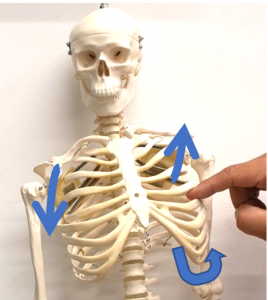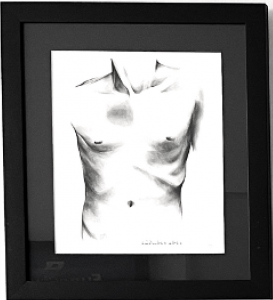BC: Brachial Chain
The Postural Restoration Institute defines the Brachial Chain (BC) as a polyarticular muscle group covering the anterior chest wall and cervical area that influences breathing, shoulder dynamics, and neck movement. The Right BC pattern is dominated by, and usually coexists with, the left AIC pattern, as the body tries to counterbalance the system.
Muscles: Anterior-Lateral Intercostals, Deltoid-Pectoral, Sibson’s Fascia, Triangularis Sterni, Sternocleidomastoid, Scaleni, Diaphragm

Symptoms often associated with Right BC are:
- Neck pain
- Shoulder pain
- SLAP lesion (Superior Labrum Anterior Posterior Lesion)
- Glenohumeral Multidirectional Instability
- Biceps Tendinitis
- Tendinitis
- Lateral epicondylitis (Tennis elbow)
- Medial epicondylitis (Golf elbow)
- De Quervain tenosynovitis
- Thoracic outlet syndrome
- Scapulothoracic regional pain (Between the scapula and spine)
- Pain at the chest bone (Costosternal junctional pain)
- Sternothoracic joint pain (Acromioclavicular (AC) and Sternoclavicular (SC) joints)
- Intracostal pain (pain at between the ribs)
- Snapping scapula
- Adhesive capsulitis

PRI’s approach to the right brachial chain
The Postural Restoration approach for shoulder and neck pain focuses on the root cause of movement dysfunctions due to asymmetrical demands on the body. PRI therapists use various manual therapy techniques and exercises to restore proper alignment and function of the right brachial chain, which in turn can help to alleviate pain and improve overall posture and movement. The goal of PRI’s approach to the right brachial chain is to treat movement dysfunction and postural compensation, which optimizes nerve and blood flow, reduces tension and irritation, and improves the overall health and function of the upper limb.
Overactive muscles: Left Pec Major, Right Pec Minor, Right Latissimus Dorsi